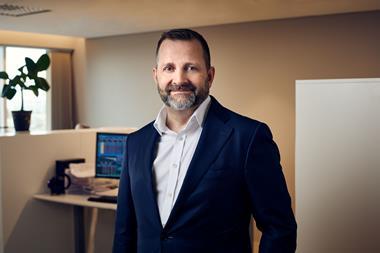The asset management industry is in a state of flux. Gone are the days when real money managers tried to beat the index through the careful selection of stocks and shares. Issues such as the scale of Europe’s pension fund deficit problems and the advent of hedge funds are key drivers pressuring investment managers to deliver alpha.
In the quest to deliver greater returns, traditional asset managers are now starting to re-evaluate their investment strategies. While they have historically only been permitted to go long in vanilla fixed income or equity products, they are now beginning to reconsider their risk management perspectives to enable them to use more exotic products such as equity derivatives.
In addition, to boost performance, they are also considering expanding investment into new asset classes, such as foreign exchange.
So, how has this state of flux created technology challenges for the fund management community? The rise of complex financial instruments has done much to propel technology further up the business agendas of both buy-side and sell-side organisations.
This has happened to such an extent that the traditional division between the front and back office, in terms of their relative importance to the trade process, has started to dissipate.
Complex instruments, evolving investment vehicles, regulation and increased investor sophistication have caused the gap between the front and back office functions to narrow considerably. Market developments have meant that automation has become much more of a business process rather than a technology issue.
Additionally, automation within the back office can now serve as a competitive advantage for some, demonstrating a dedication to efficiency and cost savings that is then passed on to clients.
One of the main challenges facing fund managers is ensuring that the gap between front and back office technology does not become too wide. Automation and technology are being fully embraced in the execution space, particularly with equities and fixed income, but trade confirmation and matching continue to lag behind.
Inefficiency in this part of the trade lifecycle, called the post-trade, pre-settlement space (POPS), can prove costly. A report by IBM estimated that handling trades that fail - trade exceptions - can amount to up to 50% of the industry’s back office costs. It is the institutions that trade on investors’ behalf that absorb these higher costs, therefore reducing investor returns on a euro-for-euro basis.
As asset managers begin to invest in increasingly complex products, the risk of a widening technology gap between front and back office increases. Credit derivative processing is a good example of this. Over the past couple of years, credit derivatives and processing challenges around these complex products have hogged the headlines.
Since 2005, when the US Federal Reserve told a group of the world’s biggest investment banks that they must pull together and bring greater efficiency to the marketplace, the industry has closely monitored progress. Significant success has been achieved since this point.
According to research by Z/Yen, there has been a 70% reduction in the overall number of outstanding confirmations of more than 30 days and, even more encouragingly, automation rates have reached more then 80%.
Having said that, the recent Z/Yen survey, which compared processing costs and volumes for nine major banks for 10 product types and 15 operations and IT activities, found that the cost per trade for a credit derivative has increased from $218 to $221, while the cost of processing an interest rate derivative has increased from $204 to $218. Clearly, there is still more work to be done and this remains a challenge going forward.
It is not just the processing of credit derivatives that has posed a concern for the securities industry. The explosion in volumes of Contracts for Differences (CFDs) that European institutions are selling to high net worth and retail customers has placed a spotlight on equity derivative processing and large strides have been made in this area.
Omgeo statistics support this. Indeed, since the company began focusing on the processing of CFDs, volumes have gone from zero to 30,000 per month. The Z/Yen survey claims that in 2005, processing costs for OTC equity options had fallen from $152 per trade to $135. However, if this is compared to the $4 processing cost of a vanilla equity trade, then equity derivative processing still has a way to go.
As the increasing involvement in more complex instruments has taken place, front office automation has kept apace, while the back office has lagged behind somewhat. The burning question is, will it take another crisis, like the US paper crisis of the 1960s, to drive the market to action, or will securities firms take action as the gulf between front office sophistication and back office inefficiency widens?
One of the biggest problems related to technology and the buy-side is that of quantifying how much is lost through inefficient technology. In short, how can the middle and back offices of financial institutions that are seen as cost centres get approval to spend money on IT in an environment of escalating costs caused by lack of investment in IT and inefficient processes in a fast-evolving environment? This vicious circle is exacerbated as current IT projects are not addressing the top issues. A recent Celent survey on IT spending on mid-back office showed that internal fragmentation was rated as the highest cause for the lack of STP across asset classes. Less than 10% of projects are focused on this issue.
Related to this is the notion of quantifying costs as a means of facilitating change. In short, how can you fix something if you can’t measure it? MiFID poses an interesting problem here. Part of the best execution rule demands that not only must a firm obtain the best possible result in the execution price of an order for a client, but it must also achieve the best possible result in terms of post-trade costs and likelihood of settlement, both affected by the level of automation of the broker and the fund manager.
Without an automated post-trade environment, measuring this cost will be totally impossible and could leave asset managers and brokers exposed to the wrath of regulators. This is a problem that needs to be addressed sooner rather than later.
One of the key technology concerns of asset managers must be to ensure that middle and back office technology runs in tandem with the fast pace of the front office. This requires those involved to prove a case for investment - a difficult task for those organisations with low levels of STP, making it impossible to analyse the inefficiencies.
Despite these potential hurdles, as continued pressure is placed on asset managers to increase investor returns and provide greater transparency on operational costs, driven by issues such as pension fund deficits and regulation respectively, we should see middle and back office technology move further up the list of priorities for asset management firms. Many of the technology challenges facing fund managers today should start to be resolved.
Tony Freeman is executive director of Omgeo, a provider of post-trade, pre-settlement services














No comments yet